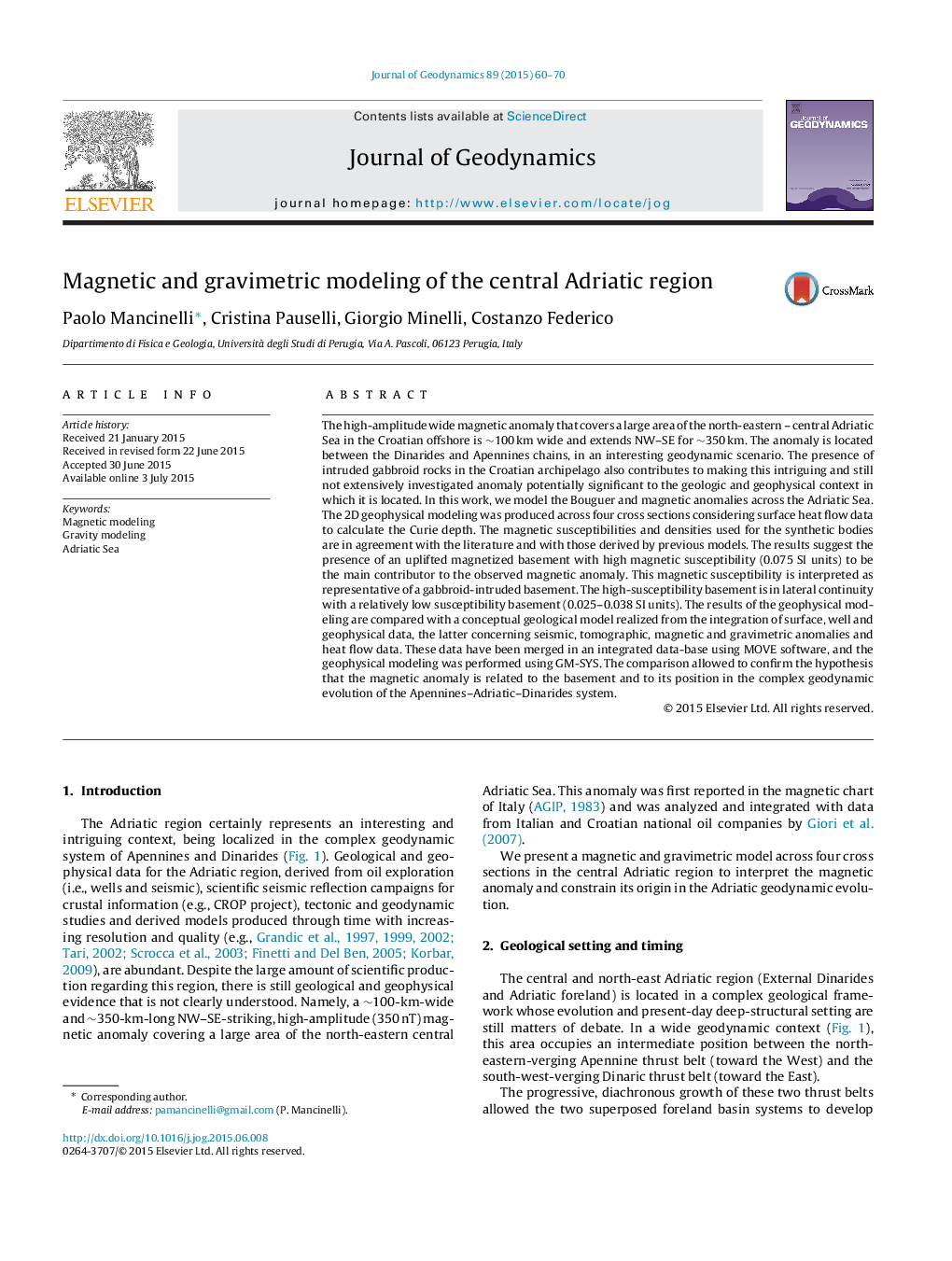| Article ID | Journal | Published Year | Pages | File Type |
|---|---|---|---|---|
| 4688021 | Journal of Geodynamics | 2015 | 11 Pages |
•We produced four sections across the Adriatic to model magnetic and gravity anomalies.•We constrained geophysical models and derived outcomes to geological observations.•We interpret the magnetic anomaly as caused by gabbro-intruded and uplifted basement.
The high-amplitude wide magnetic anomaly that covers a large area of the north-eastern – central Adriatic Sea in the Croatian offshore is ∼100 km wide and extends NW–SE for ∼350 km. The anomaly is located between the Dinarides and Apennines chains, in an interesting geodynamic scenario. The presence of intruded gabbroid rocks in the Croatian archipelago also contributes to making this intriguing and still not extensively investigated anomaly potentially significant to the geologic and geophysical context in which it is located. In this work, we model the Bouguer and magnetic anomalies across the Adriatic Sea. The 2D geophysical modeling was produced across four cross sections considering surface heat flow data to calculate the Curie depth. The magnetic susceptibilities and densities used for the synthetic bodies are in agreement with the literature and with those derived by previous models. The results suggest the presence of an uplifted magnetized basement with high magnetic susceptibility (0.075 SI units) to be the main contributor to the observed magnetic anomaly. This magnetic susceptibility is interpreted as representative of a gabbroid-intruded basement. The high-susceptibility basement is in lateral continuity with a relatively low susceptibility basement (0.025–0.038 SI units). The results of the geophysical modeling are compared with a conceptual geological model realized from the integration of surface, well and geophysical data, the latter concerning seismic, tomographic, magnetic and gravimetric anomalies and heat flow data. These data have been merged in an integrated data-base using MOVE software, and the geophysical modeling was performed using GM-SYS. The comparison allowed to confirm the hypothesis that the magnetic anomaly is related to the basement and to its position in the complex geodynamic evolution of the Apennines–Adriatic–Dinarides system.
